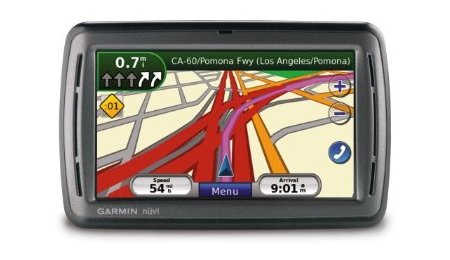 All Entries Tagged With: "electronics"
All Entries Tagged With: "electronics"
NHTSA and NASA Say Toyota Electronic Throttles Are Just Fine
Today, NHTSA announced that Toyota’s electronic throttles aren’t responsible for any instance of unintended acceleration – at least not any instance that NHTSA could study. According to Department of Transportation Secretary Ray LaHood:
“The jury is back. The verdict is in. There is no electronic-based cause for unintended high-speed acceleration in Toyotas. Period…Our conclusion — that Toyota’s problems were mechanical, not electrical — comes after one of the most exhaustive, thorough and intensive research efforts ever undertaken.” [From Detroit News]
Let me say that one more time: after one of the most exhaustive, thorough, and intensive research efforts ever undertaken, NHTSA couldn’t find one flipping thing wrong with Toyota’s electronic systems.
This news comes as no surprise – in July 2010, early results from the NHTSA investigation were leaked to the New York Times. These early results showed that, in the vast majority of cases, unintended acceleration was caused by “pedal misapplication” (that’s safety-nerd-speak for “foot on the wrong pedal.”
NHTSA’s team of investigators, working with experts from NASA, couldn’t find one single shred of evidence to support accusations of electronic throttle problems.
Not one.
It turns out that the early analysis offered – over-sized floor mats, improperly placed floor mats, the rare “sticking pedal”, and driver confusion – were indeed the cause of all of these complaints. The questions are, now that this crisis is over:
- What will Toyota do to put this information in front of the public?
- How many people who argued that Toyota was at fault – or at the very least got caught up in all this mindless hysteria – will admit they were wrong?
- How many people will ignore this information because it suits their financial purpose?
Sean Kane, a supposed “auto safety” consultant, continues to say that Toyota’s electronics are at fault (link). This is the same Sean Kane who gets his checks from product liability lawyers suing Toyota for billions…but why is anyone listening to him now that he’s clearly been proven wrong?
Search terms people used to find this page:
- tundraheadquarters
2009 GPS Unit Buyers Guide Part Two – Top Portable GPS Units
If there is one characteristic that all of the best-selling portable GPS devices share, it is uniformity. In terms of shape and size, most GPS units look very, very similar, and as discussed in the first part of this two-part portable GPS buying guide, all of these portable GPS units offer very similar functionality.
The portable GPS industry is dominated by two companies: Garmin and TomTom. In fact, of the devices we examined, all but one were produced by Garmin. As such, we’ll analyze Garmin’s offerings first, arranged in descending order by price.
2009 Portable GPS Unit Buyer’s Guide – Part One
Back in the old days – a.k.a. the days before GPS – when you needed to go somewhere you’d never been before there was a process you had to follow. First, you’d ask whoever it was that you were meeting for directions. Next, you’d consult a road atlas or a map. Finally, just in case you got lost, you’d be sure to write down a phone number.
How *did* we survive? 🙂
OK OK, you don’t need GPS…but it sure is nice. GPS navigation systems save time and trouble, and more and more they can be found in cars, computers, and cell phones. While GPS enabled cell-phones are growing dramatically, the most popular GPS navigation option is a portable, dedicated unit. Ranging from $100 to $400, dedicated portable GPS units are a nice accessory for vehicles and a popular holiday gift.
Thus, our buyer’s guide. In part one of this two-part guide, we’ll break down the key features offered on most GPS portable units. In part two, we’ll evaluate some specific models that are popular right now and offer some recommendations. Here we go…


